Cake decorating tips can be confusing. What’s the difference between all of the unusual-looking shapes? Which tip is best suited to which cake decorating project? This series is an exploration of all sorts of different types of tips, breaking down what they look like, what they do, and how to use them. In this roundup, rose tips, leaf tips and drop flower tips are discussed.
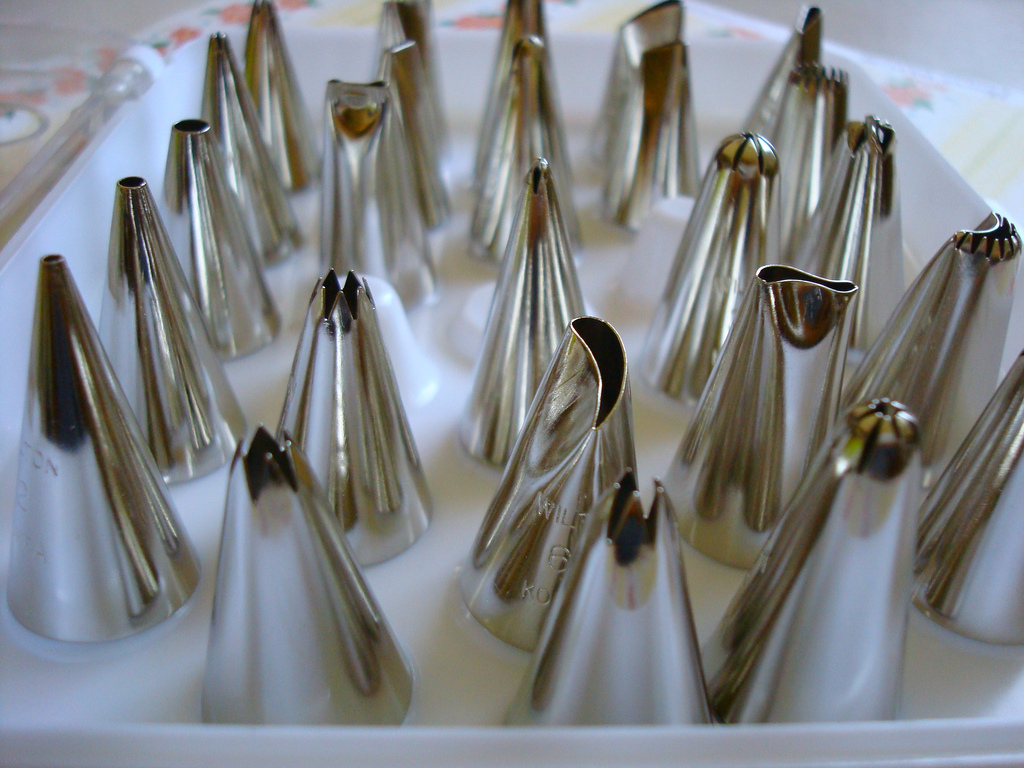
Photo via CakeSpy
Rose Tips
Ever seen a cake topped with pretty roses or flowers with delicate petals made of buttercream, ganache or royal icing? Chances are they were created using a rose tip.

What it looks like:
Similar to a round tip (the most basic type, which looks like a miniature silver traffic cone), but with a defined teardrop or almond-shaped opening that is wide at one end and tapers to a narrow opening on the other end.
Variations:
Rose tips come in many different sizes, with different widths and different tapering from end-to-end. The size of the opening determines if your petals are thicker or flatter. There are also variations that are slightly curved in addition to being teardrop shaped or more like the shape of a comma. These can increase the variety or shape of petals that you can produce.
Most famous uses:
This tip is most commonly used for roses but is also used for flower petals of all sorts, including carnations, daisies, sunflowers and more. For roses, tips #12 and #104 are very popular.
Other uses:
In addition to creating flower petals of all sorts, this type of tip is also wonderful for creating ribbon (the slightly irregular shape gives it a natural look), as well as scalloped borders.
An example of work using a rose tip:
This cake employs several types of tips for the entire decoration, but the flowers on the top are a good example of beautiful work with a rose tip.
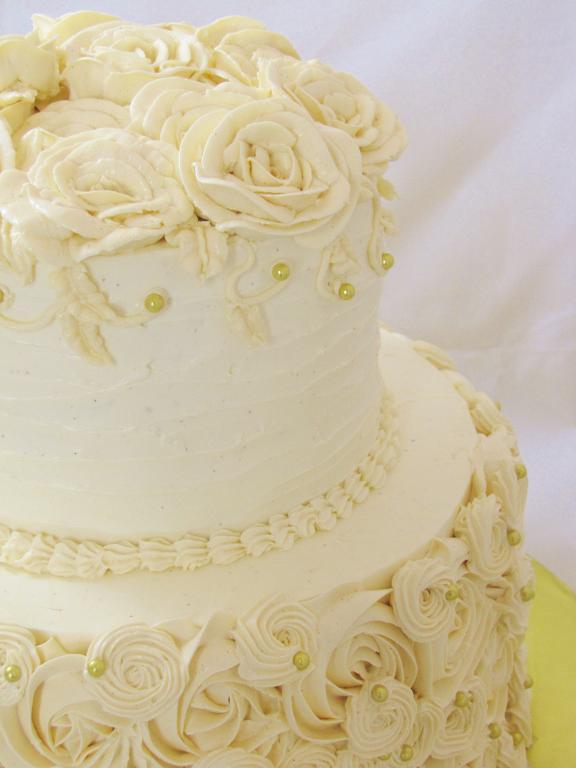
Photo via MrsGillespie
Leaf Tips
Leaf formations in all shapes and sizes can be created thanks to leaf tips, which can create a single leaf or an entire forest, depending on how you use them.
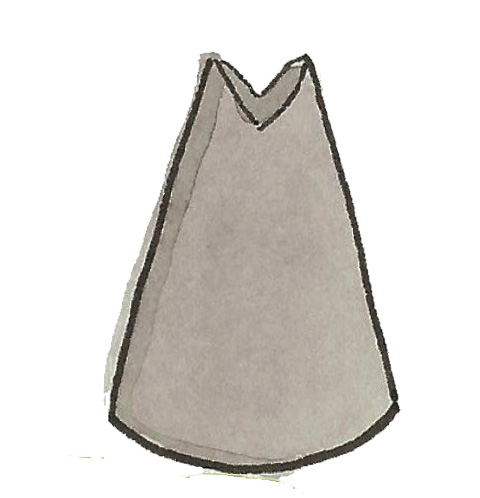
What it looks like:
In its most basic form, this type of tip will have a simple V-shaped opening. This allows you to attain pointed ends on your leaves.
Variations:
As previously mentioned, the most basic tip is a simple V-shape. From there, the openings can get more ornate. This allows for differently shaped leaves or leaves with interesting variation or variegation.
Most famous uses:
Not to belabor the point, but…leaves — all shapes and sizes of them. With any leaf tip, you can make plain, ruffled or stand-up leaves.
Other uses:
All manner of greenery, including vines and seaweed shapes. Ideal for shell borders too.
Examples of work using a leaf tip:
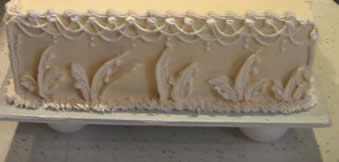
Photo via Harriet’s Creations
The pretty leaf formations on the bottom of this cake are an example of some very classy work, which can be done with a leaf tip. Using all off-white buttercream makes a beautiful, wedding-appropriate look.

Photo via Max9680
This cake isn’t afraid to show its extremely vibrant true colors. This work of piping art features some lovely leaf work in addition to all of the delicate petals and blossoms.
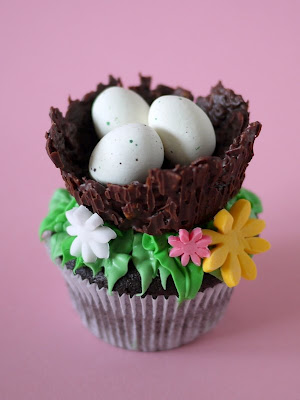
Photo via The Mucky Mackbook
This adorable cupcake is a fantastic example of clever cake decoration in many regards, from the “nest” made of chocolate to the candy eggs. But for this exercise, focus on the bed of green buttercream on which all of the decoration rests — it’s piped using a leaf tip.
Drop Flower Tips
Want an easy entrée into the world of piped flowers? Look no further than the drop tip, which is largely viewed as a great “beginner” decorating tip for its ease of use and polished, professional-looking results.

What it looks like:
Toward the opening, there are a series of cuts. The opening also curves in slightly, giving it almost the look of a clenched claw.
Variations:
There are many different types of drop flower tips, ranging from different opening sizes, and simple to very complex cuts on the top. The number of cuts on the end of the tip determines the number of petals the flower will have.
Most famous uses:
To make “one squeeze” flowers, simply apply pressure until a dot of icing has come out of the opening, and pull away — an instant, easy-to-form flower with minimal effort.
Other uses:
You can use this type of tip to make two different flower varieties: plain or swirled. This type of tip can also be used to create lovely larger rosettes, as in the second example below.
Examples of work using a drop flower tip:

Photo via Made in Melissa’s Kitchen
This is a lovely example of drop flowers piped in their simplest form, atop a canvas of white buttercream. The drop flowers are a simple but very pretty complement.
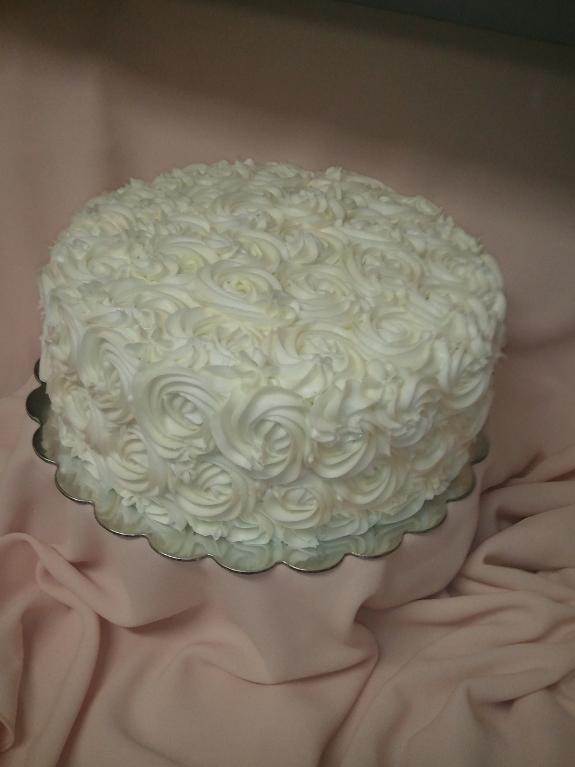
Photo via 4goodnesskakes
Drop flower tips aren’t just for drop flowers! This rosette cake was made using a drop flower tip (#2F), and serves as a good example of different possibilities with this type of tip.

Share tips, start a discussion or ask one of our experts or other students a question.
No Responses to “Sweet Tips for Decorating: Rose, Leaf & Flower”